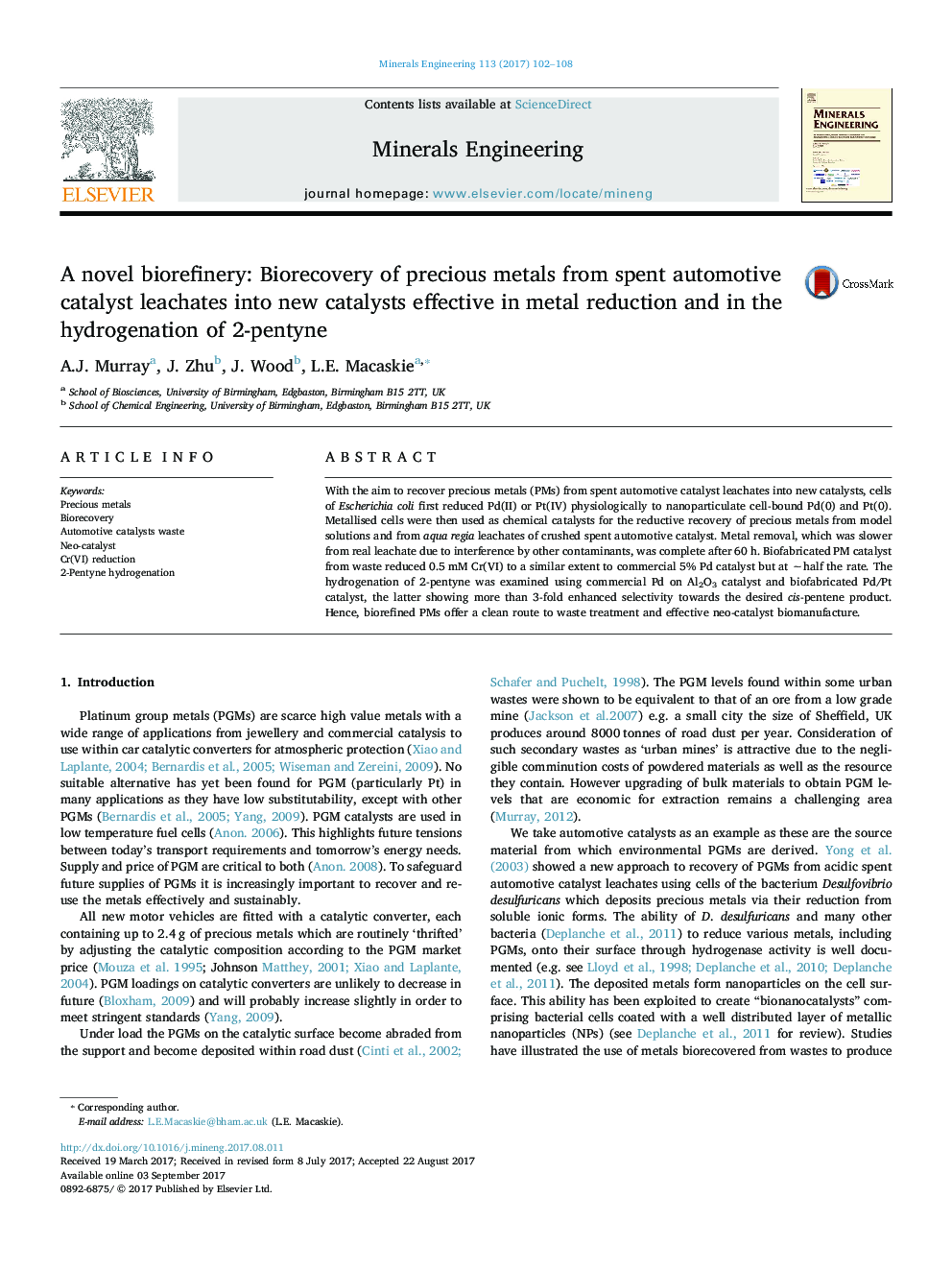| Article ID | Journal | Published Year | Pages | File Type |
|---|---|---|---|---|
| 4910136 | Minerals Engineering | 2017 | 7 Pages |
Abstract
With the aim to recover precious metals (PMs) from spent automotive catalyst leachates into new catalysts, cells of Escherichia coli first reduced Pd(II) or Pt(IV) physiologically to nanoparticulate cell-bound Pd(0) and Pt(0). Metallised cells were then used as chemical catalysts for the reductive recovery of precious metals from model solutions and from aqua regia leachates of crushed spent automotive catalyst. Metal removal, which was slower from real leachate due to interference by other contaminants, was complete after 60Â h. Biofabricated PM catalyst from waste reduced 0.5Â mM Cr(VI) to a similar extent to commercial 5% Pd catalyst but at â¼half the rate. The hydrogenation of 2-pentyne was examined using commercial Pd on Al2O3 catalyst and biofabricated Pd/Pt catalyst, the latter showing more than 3-fold enhanced selectivity towards the desired cis-pentene product. Hence, biorefined PMs offer a clean route to waste treatment and effective neo-catalyst biomanufacture.
Related Topics
Physical Sciences and Engineering
Chemical Engineering
Chemical Engineering (General)
Authors
A.J. Murray, J. Zhu, J. Wood, L.E. Macaskie,
